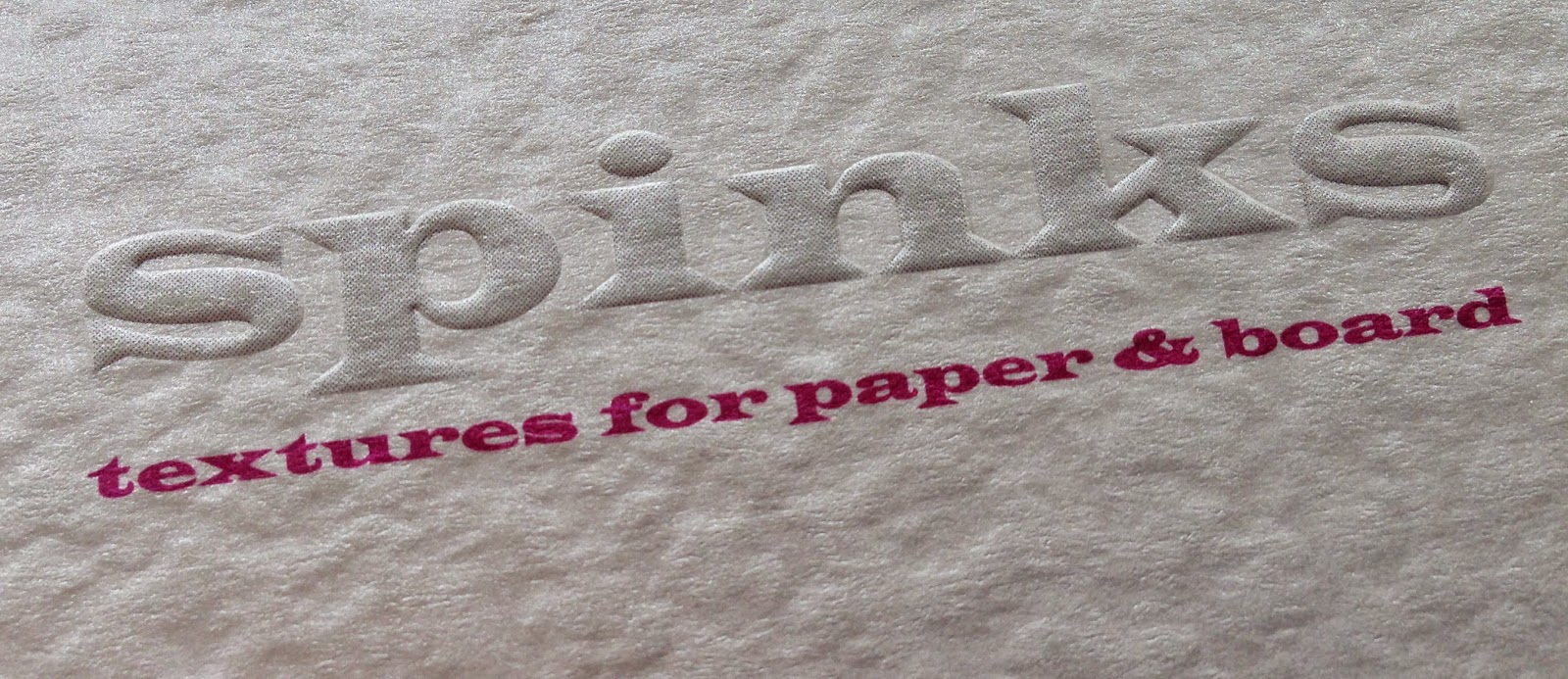Regular followers of this blog will know that in the middle of the month, I publish a "What is ....? post. The article covers various aspects of paper, printing and finishing in greater depth. However, many of these subjects are complex, so these posts are only intended to be a brief introduction to the topic.
If a one sided effect is required (EG greeting cards or covers) the backing roll is left plain and the pattern is only apparent on one side. For a two sided effect or what is referred to as a 'through embossing' the two rolls are geared together and the metal roll is run against the fibre roll which forms an interlocking male/female impression. The effect produces a pattern on the topside of the sheet and a reverse effect on the underside.

There is another interesting factor to consider - it makes sense, from a printing point of view, to put ink onto a flat surface. So what we are suggesting here is to emboss sheets after printing! ...yes this has been common practice for years but has now largely been forgotten because paper companies have been too busy selling 'ready embossed' paper ranges! Problems associated with 'bottoming out the print' especially with uncoated substrates can be eliminated by embossing the printed sheets after printing. The below image shows a cover printed CMYK on a silk coated board which has then been sheet embossed.

So I now have an example of how this process was applied to a project in the real world. Jason Maclaren at Cantate (
www.cantatecommunications.com) was briefed on a project to produce cocktail menus for Dirty Martini, a collection of London based cocktail bars. In order to keep within the budget, Jason supplied a self coloured, black 350gsm board into Spinks and had it 'grained' with their 'Seal' pattern . After graining, the board was then taken to a print finishers where it was 'blind debossed' with a diamond pattern and hot foil blocked with gold foil. As I hope you can see from the image below, it is a cracking result.

 |
Colorset Crimson embossed
- click on image to enlarge |
Hopefully this article will serve to demystify the process of graining or sheet embossing. It is possible to emboss virtually all paper and board and it's worth mentioning that our Colorset embosses very well indeed! Some papers with a very hard surface sometimes don't emboss that well but you can always request a sample to be produced.
...and don't forget, you can emboss paper after it has been printed - that really isn't rocket science!
Thanks to Gary Spinks and Rebecca Standley at
SPINKS Embossers and to Jason Maclaren at Cantate for the interesting case study.
http://spinksembossers.co.uk/
www.cantatecommunications.com
Posted by Justin Hobson 16.02.2015











































